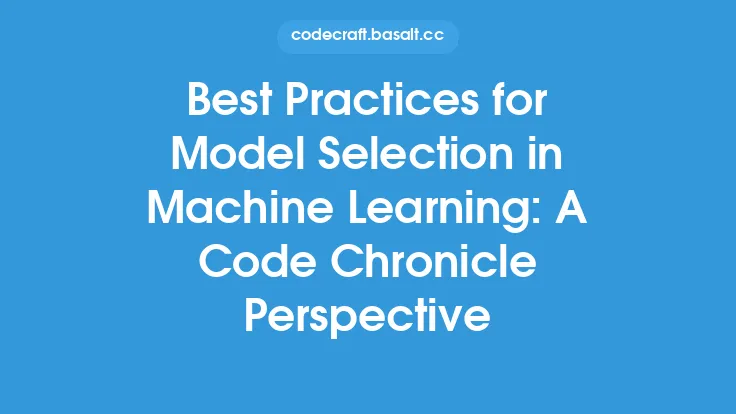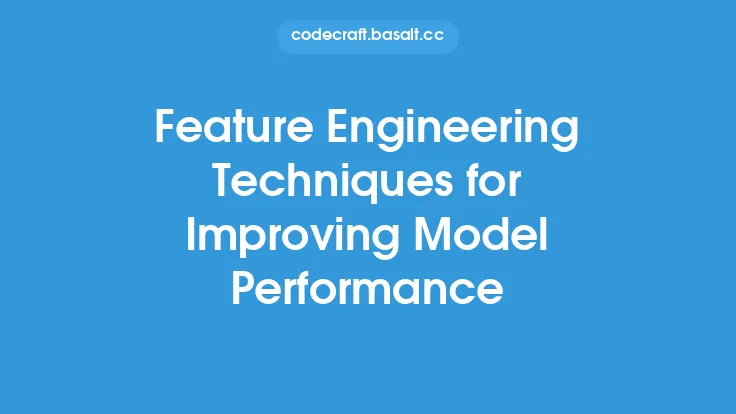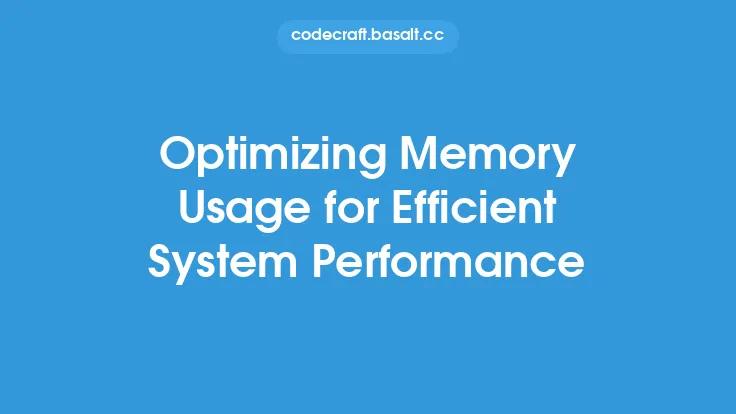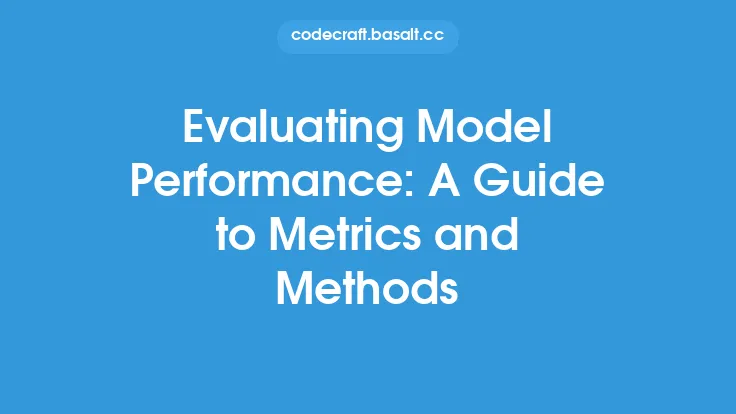When it comes to machine learning, selecting the right model is crucial for achieving optimal performance. With numerous models available, each with its strengths and weaknesses, choosing the best one for a specific problem can be overwhelming. In this article, we will delve into the world of model selection strategies, exploring the various techniques and methodologies that can help you choose the most suitable model for your machine learning project.
Introduction to Model Selection Strategies
Model selection strategies are designed to help you evaluate and compare different models, ensuring that you choose the one that best fits your problem and data. These strategies can be broadly categorized into two main types: traditional and modern. Traditional strategies rely on statistical methods, such as cross-validation and bootstrapping, to evaluate model performance. Modern strategies, on the other hand, leverage advanced techniques like Bayesian optimization and gradient-based optimization to search for the optimal model.
Cross-Validation Techniques
Cross-validation is a widely used technique for evaluating model performance. It involves splitting the available data into training and testing sets, training the model on the training set, and then evaluating its performance on the testing set. This process is repeated multiple times, with different splits of the data, to obtain a reliable estimate of the model's performance. There are several types of cross-validation techniques, including k-fold cross-validation, leave-one-out cross-validation, and stratified cross-validation. Each of these techniques has its strengths and weaknesses, and the choice of which one to use depends on the specific problem and data.
Information Criteria
Information criteria, such as Akaike information criterion (AIC) and Bayesian information criterion (BIC), are another popular method for model selection. These criteria provide a measure of the relative quality of each model, taking into account both the model's goodness of fit and its complexity. AIC and BIC are calculated using the likelihood function and the number of parameters in the model, and the model with the lowest AIC or BIC value is typically chosen as the best model.
Bayesian Model Selection
Bayesian model selection is a probabilistic approach to model selection, which involves calculating the posterior probability of each model given the data. This is done using Bayes' theorem, which combines the prior probability of each model with the likelihood of the data given the model. The model with the highest posterior probability is then chosen as the best model. Bayesian model selection can be computationally intensive, but it provides a powerful framework for model selection, especially when dealing with complex models and large datasets.
Gradient-Based Optimization
Gradient-based optimization is a modern approach to model selection, which involves using gradient descent algorithms to search for the optimal model. This approach is particularly useful when dealing with large models and datasets, as it can efficiently search the model space and find the best model. Gradient-based optimization can be used in conjunction with other model selection strategies, such as cross-validation and information criteria, to provide a robust and efficient model selection framework.
Model Selection in Practice
In practice, model selection involves a combination of technical skills, domain knowledge, and experience. It requires a deep understanding of the problem, the data, and the available models, as well as the ability to evaluate and compare different models using various techniques and methodologies. Model selection is an iterative process, which involves refining and adjusting the model selection strategy as more data becomes available and as the problem evolves.
Common Pitfalls and Challenges
Model selection is not without its challenges and pitfalls. One of the most common pitfalls is overfitting, which occurs when a model is too complex and fits the noise in the data rather than the underlying patterns. Another challenge is the curse of dimensionality, which occurs when the number of features in the data is large, making it difficult to select the most relevant features. Additionally, model selection can be computationally intensive, especially when dealing with large datasets and complex models.
Future Directions
The field of model selection is constantly evolving, with new techniques and methodologies being developed to address the challenges and pitfalls of model selection. One of the most promising areas of research is the development of automated model selection frameworks, which can efficiently search the model space and select the best model without human intervention. Another area of research is the development of more robust and efficient model selection strategies, which can handle large datasets and complex models.
Conclusion
Model selection is a critical component of machine learning, and choosing the right model is essential for achieving optimal performance. By understanding the various model selection strategies and techniques, including cross-validation, information criteria, Bayesian model selection, and gradient-based optimization, you can develop a robust and efficient model selection framework that helps you choose the best model for your specific problem and data. Whether you are a seasoned machine learning practitioner or just starting out, model selection is an essential skill that can help you unlock the full potential of machine learning and achieve success in your projects.





